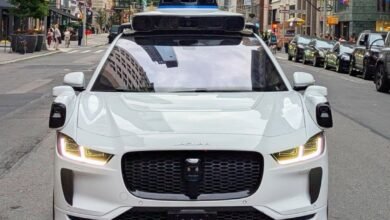Is Europe Ready for the Self-Driving Car Revolution?

▼ Summary
– Jelle Prins, creator of Uber’s first app, envisions autonomous vehicles enabling overnight travel and sees self-driving as the inevitable next evolution in mobility.
– Current Level 2 autonomous vehicles like the Kia EV9 use adaptive technologies but still require human drivers, with gradual progress toward fully driverless Level 5 systems.
– The EU lags behind the US, China, and the UK in AV adoption due to fragmented regulations, inconsistent infrastructure, and lack of unified standards.
– Autonomous vehicles could transform cities by reducing parking needs, enabling smarter traffic management, and making commutes more productive, but may also disrupt jobs and raise ethical and cybersecurity concerns.
– Widespread AV deployment in Europe faces challenges including infrastructure gaps, regulatory inconsistencies, liability questions, and public skepticism about safety compared to human drivers.
The prospect of autonomous vehicles reshaping European mobility is no longer a distant fantasy but an approaching reality. Jelle Prins, the creator of Uber’s first app, recently painted a compelling picture of this future, one where a passenger in Amsterdam could fall asleep and wake up in the French Alps, ready for a day on the slopes. His vision, shared in an interview for “Kia’s Next Big Drive,” underscores a broader shift already underway, though Europe faces significant hurdles before it can fully embrace a driverless era.
Current advancements are incremental but telling. The Kia EV9, featured in the discussion, operates at Level 2 autonomy, utilizing adaptive cruise control to maintain speed and distance from other vehicles. While still requiring human oversight, such technologies represent critical stepping stones toward fully autonomous systems. Automakers are steadily introducing more sophisticated features, inching closer to the goal of Level 5 self-driving, where no driver input is needed.
Globally, the race is accelerating. In the United States, companies like Waymo have launched commercial robotaxi services in multiple cities, with plans to expand further. China’s Baidu has tested autonomous ride-hailing across numerous urban centers, targeting 100 cities by the end of the decade. Even the UK, traditionally cautious with new mobility tech, passed landmark legislation in 2024 to create a clear regulatory framework for self-driving vehicles.
Europe, by contrast, lags behind. The absence of harmonized regulations, uneven infrastructure, and fragmented 5G coverage threaten to delay widespread adoption. Without coordinated investment and policy alignment, the region risks being left in the wake of more agile competitors.
The potential urban benefits are profound. Imagine cities like Amsterdam or Barcelona transformed, fewer parking spaces, more green zones, and pedestrian-friendly layouts made possible by fleets of coordinated autonomous vehicles. Commutes could become productive or relaxing intervals rather than stressful chores. With real-time communication between cars and smart city systems, traffic flow could be optimized, reducing congestion and emissions.
But the transition is not without its challenges. Job displacement poses a serious socioeconomic threat. The transport and logistics sector employs hundreds of thousands across Europe; automation could eliminate many of these roles, necessitating large-scale reskilling initiatives. Ethical dilemmas also arise, such as how AVs should behave in no-win accident scenarios. Aligning machine decisions with human values remains an unresolved and deeply philosophical problem.
Cybersecurity is another critical concern. As vehicles grow more connected, they become targets for malicious attacks. Recent demonstrations, like the MadRadar spoofing technique, show how easily sensors can be deceived, creating phantom obstacles and compromising safety.
Infrastructure readiness varies widely. Europe’s patchwork of road signage, language differences, and inconsistent design standards complicates the rollout of AVs, which rely heavily on uniform visual cues and machine learning. Reliable 5G and V2X communication systems are essential yet unevenly deployed.
Regulatory fragmentation only adds to the complexity. Liability frameworks remain unclear, in the event of an accident, is the manufacturer, software developer, or occupant responsible? Without EU-wide standards, progress may stall even as technology advances.
Public perception also plays a role. Studies suggest people hold self-driving cars to higher safety standards than human drivers, often overestimating their own driving skills. This psychological bias could slow acceptance, even if AVs ultimately prove safer.
So when will autonomous vehicles become commonplace on European roads? Technologically, the pieces are falling into place. But socially, politically, and infrastructurally, there is much work to do. The conversation is shifting from “if” to “how”, how Europe will adapt its cities, laws, and workforce to harness the benefits of autonomy while mitigating its risks. The future of mobility is coming; the question is whether Europe will be ready to meet it.
(Source: The Next Web)





